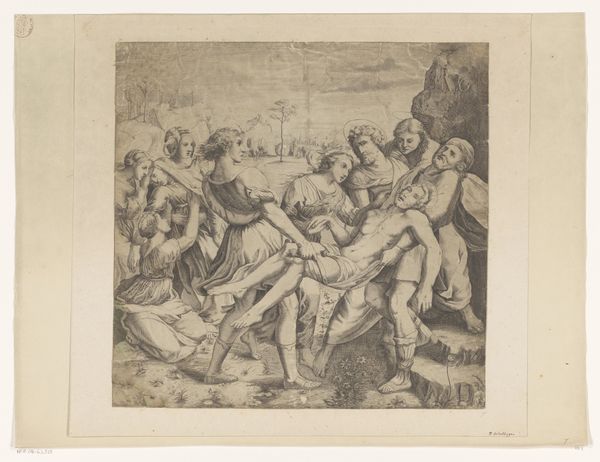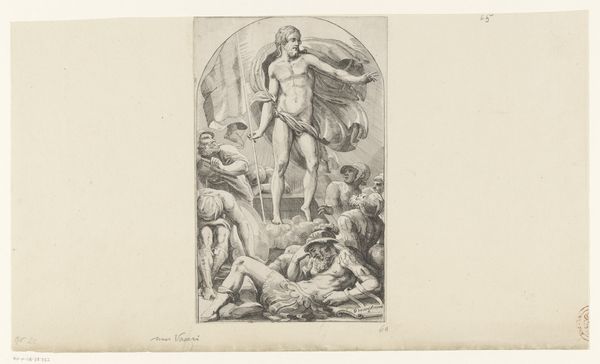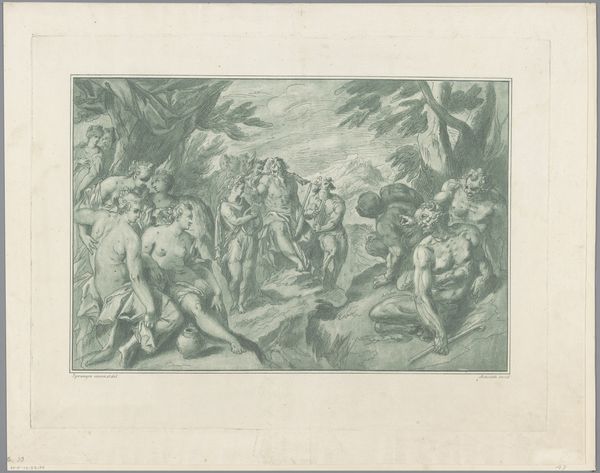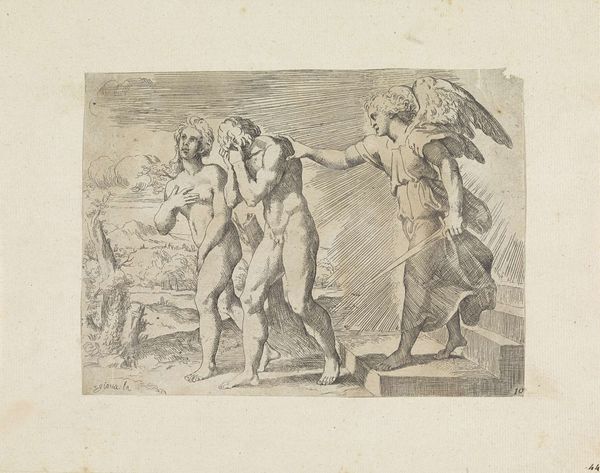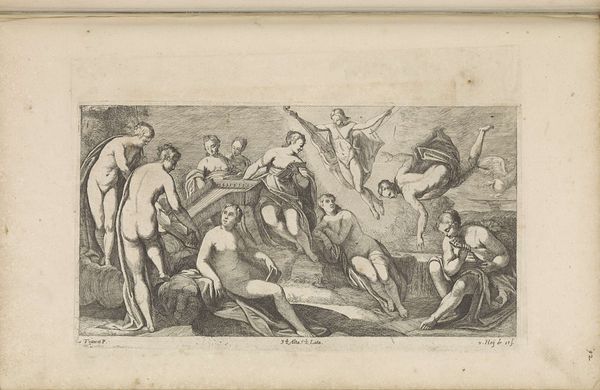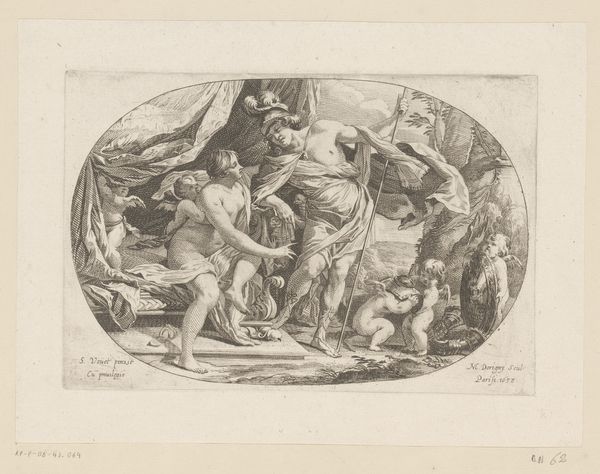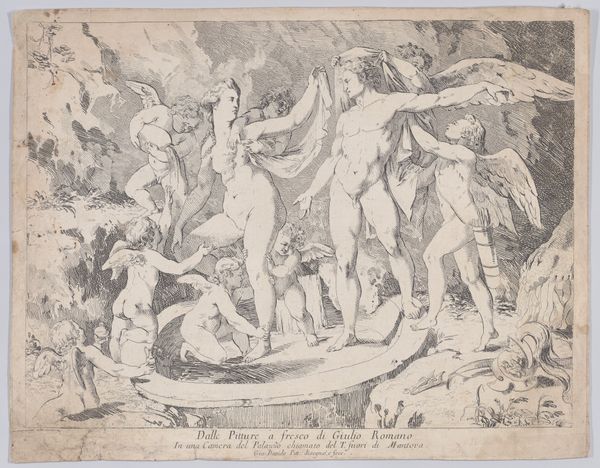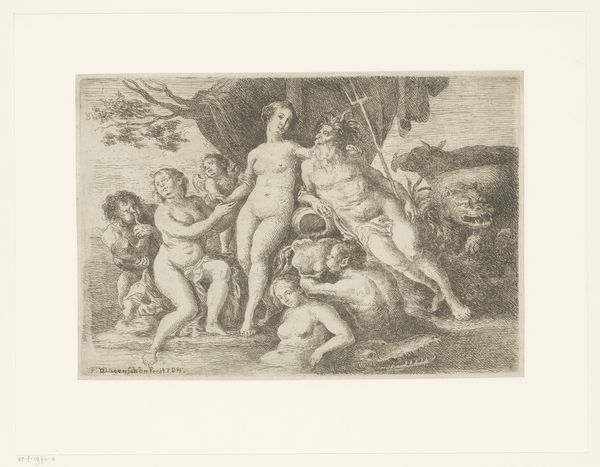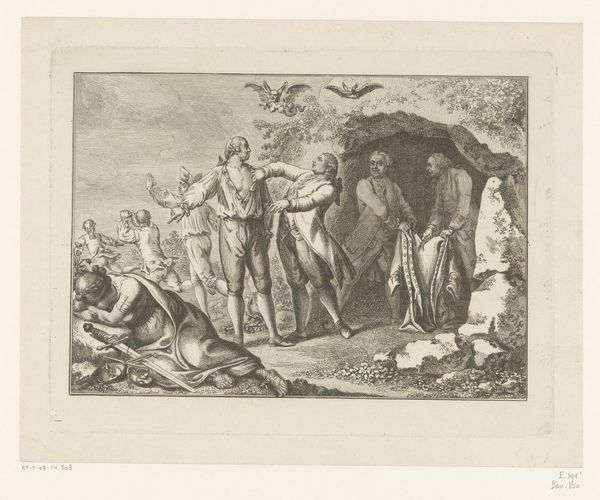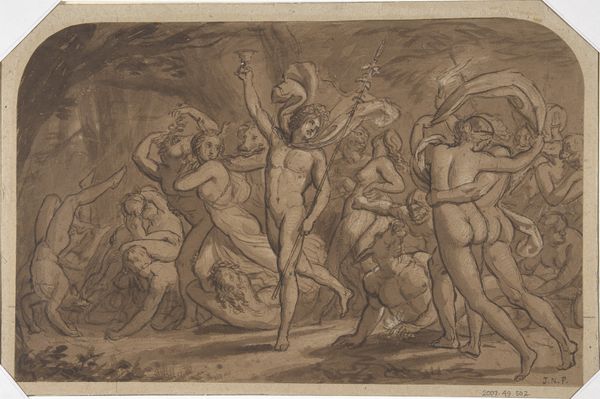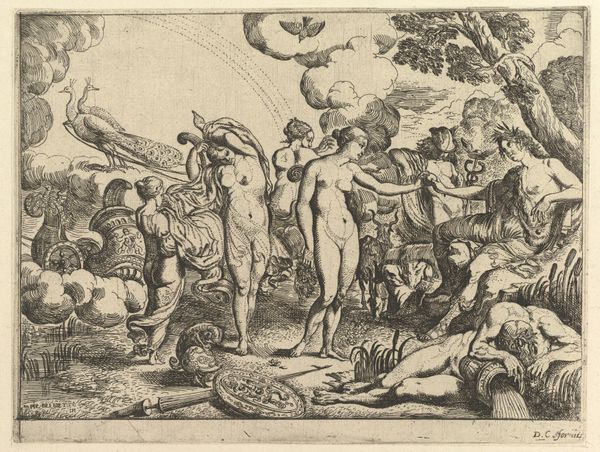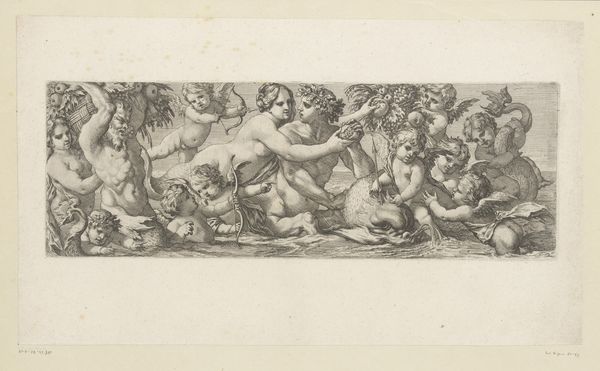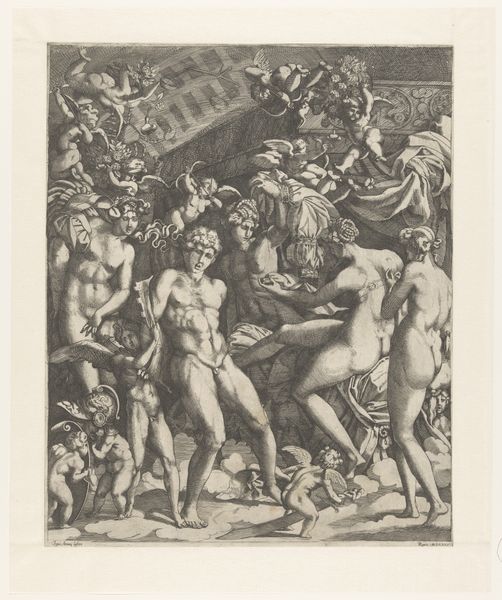
print, etching
# print
#
etching
#
etching
#
figuration
#
history-painting
#
italian-renaissance
Dimensions: height 154 mm, width 264 mm
Copyright: Rijks Museum: Open Domain
Curator: Here we have "Eros en Anteros," an etching dating from between 1540 and 1556 by Léon Davent. What are your initial thoughts? Editor: Well, my first impression is that it's quite dynamic. The composition seems deliberately chaotic, full of cherubic figures engaged in what appears to be a rather brutal brawl. There is tension here, for sure. Curator: Indeed. Consider that printmaking in the Italian Renaissance involved a workshop dynamic. Davent likely had assistants who contributed to the etching, reflecting the commodification of art production. Each impression made art more widely available, affecting how value was perceived. Editor: I see your point about production. But, looking closely, the cross-hatching creates a real sense of depth, doesn’t it? Notice how the light catches the figures' musculature, highlighting their expressive gestures. It draws you right into the center of the fight. Curator: Yes, and that use of line also speaks to the printmaking process. The relatively low cost of prints broadened access to classical stories, thus fueling the rise of secular humanism among a broader populace. Editor: But does it necessarily dilute the power of the image to understand its social purpose? The figures display considerable refinement, each a study in idealized form. Look at the central figure—his contrapposto pose is perfectly rendered. This work still demonstrates DaVant's technical skill. Curator: I am not dismissing DaVant’s skill. However, the prints distributed were commodities that provided both knowledge and aesthetics to a society hungry for accessible art forms. That accessibility shaped art just as much as an individual artist's hand. Editor: It is fascinating how a single etching can prompt such different lines of thought. I will look closer to prints now in consideration of its commodity, while still appreciating the sheer mastery in the composition and the line work. Curator: And I appreciate thinking about the skill employed while recognizing that those skills were themselves part of a broader market revolution that democratized visual culture. It is essential to view both aspects of "Eros en Anteros."
Comments
No comments
Be the first to comment and join the conversation on the ultimate creative platform.
